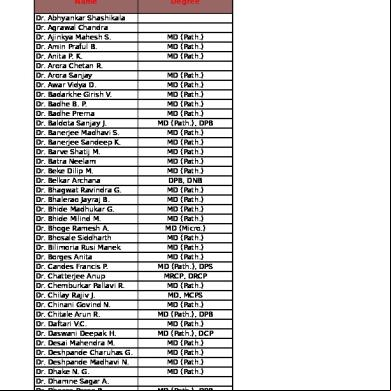Channel Performance 135b3s
This document was ed by and they confirmed that they have the permission to share it. If you are author or own the copyright of this book, please report to us by using this report form. Report 3i3n4
Overview 26281t
& View Channel Performance as PDF for free.
More details 6y5l6z
- Words: 1,186
- Pages: 21
|
j
The importance of channel member performance equals that of employee evaluations within the firm.
1. The channel manager works with individual firms rather than with individual employees. 2. The setting is interorganizational rather than intraorganizational.
j
1. Degree of the manufacturer¶s control over channel 2. Relative importance of channel 3. Nature of the product 4. Number of channel
| |
|
|
valuation of channel is more comprehensive for manufacturers who sell all of their output through intermediaries than for manufacturers who rely less on intermediaries.
Because the firm¶s success in the market is directly dependent on the channel ¶ performance
The more complex the product, the broader the scope of evaluation
[ For products of very high unit value, the gain or loss of a single order is important to the manufacturer
|
@anufacturers who use intensive distribution
Channel member evaluation may be cursory
|
j
i
!
j
!
i "# $# i %# & '
j
"| ! ( ! | )
| *
"#
%#
|
| ' $#
|
m 1. Total level of channel member¶s inventory 2. Shelf or floor space devoted to inventory 3. Shelf or floor space provided relative to competitors¶ inventory 4. Breakdown by particular products in units & dollars 5. Comparison of figures with channel ¶ estimated purchases of related & competitive lines 6. Condition of inventory & inventory facilities 7. Amount of old stock on hand & efforts made to move it 8. Adequacy of channel member¶s inventory control & record-keeping system
| @
* "# %# +
$#
! | +
+
|
| *
"#
$#
|
|
6 6# m * "# $# %# # #
i
, '
# !
#
j
! | "#
Three Approaches
$# '
%# '
|
||
-
||
. "# | $# / %# # . # /
j
$ | ! |
"# $# i %# |
j
The importance of channel member performance equals that of employee evaluations within the firm.
1. The channel manager works with individual firms rather than with individual employees. 2. The setting is interorganizational rather than intraorganizational.
j
1. Degree of the manufacturer¶s control over channel 2. Relative importance of channel 3. Nature of the product 4. Number of channel
| |
|
|
valuation of channel is more comprehensive for manufacturers who sell all of their output through intermediaries than for manufacturers who rely less on intermediaries.
Because the firm¶s success in the market is directly dependent on the channel ¶ performance
The more complex the product, the broader the scope of evaluation
[ For products of very high unit value, the gain or loss of a single order is important to the manufacturer
|
@anufacturers who use intensive distribution
Channel member evaluation may be cursory
|
j
i
!
j
!
i "# $# i %# & '
j
"| ! ( ! | )
| *
"#
%#
|
| ' $#
|
m 1. Total level of channel member¶s inventory 2. Shelf or floor space devoted to inventory 3. Shelf or floor space provided relative to competitors¶ inventory 4. Breakdown by particular products in units & dollars 5. Comparison of figures with channel ¶ estimated purchases of related & competitive lines 6. Condition of inventory & inventory facilities 7. Amount of old stock on hand & efforts made to move it 8. Adequacy of channel member¶s inventory control & record-keeping system
| @
* "# %# +
$#
! | +
+
|
| *
"#
$#
|
|
6 6# m * "# $# %# # #
i
, '
# !
#
j
! | "#
Three Approaches
$# '
%# '
|
||
-
||
. "# | $# / %# # . # /
j
$ | ! |
"# $# i %# |





